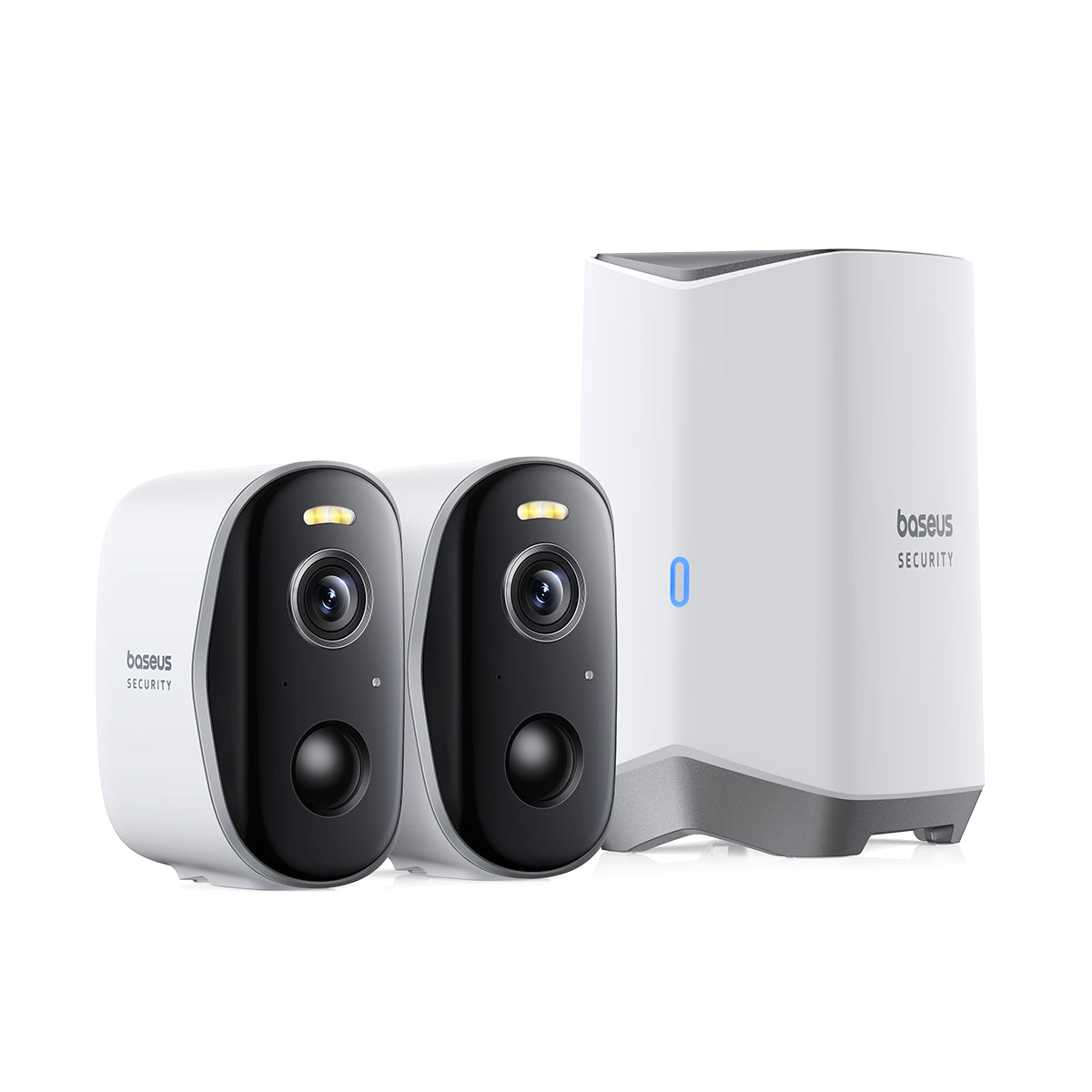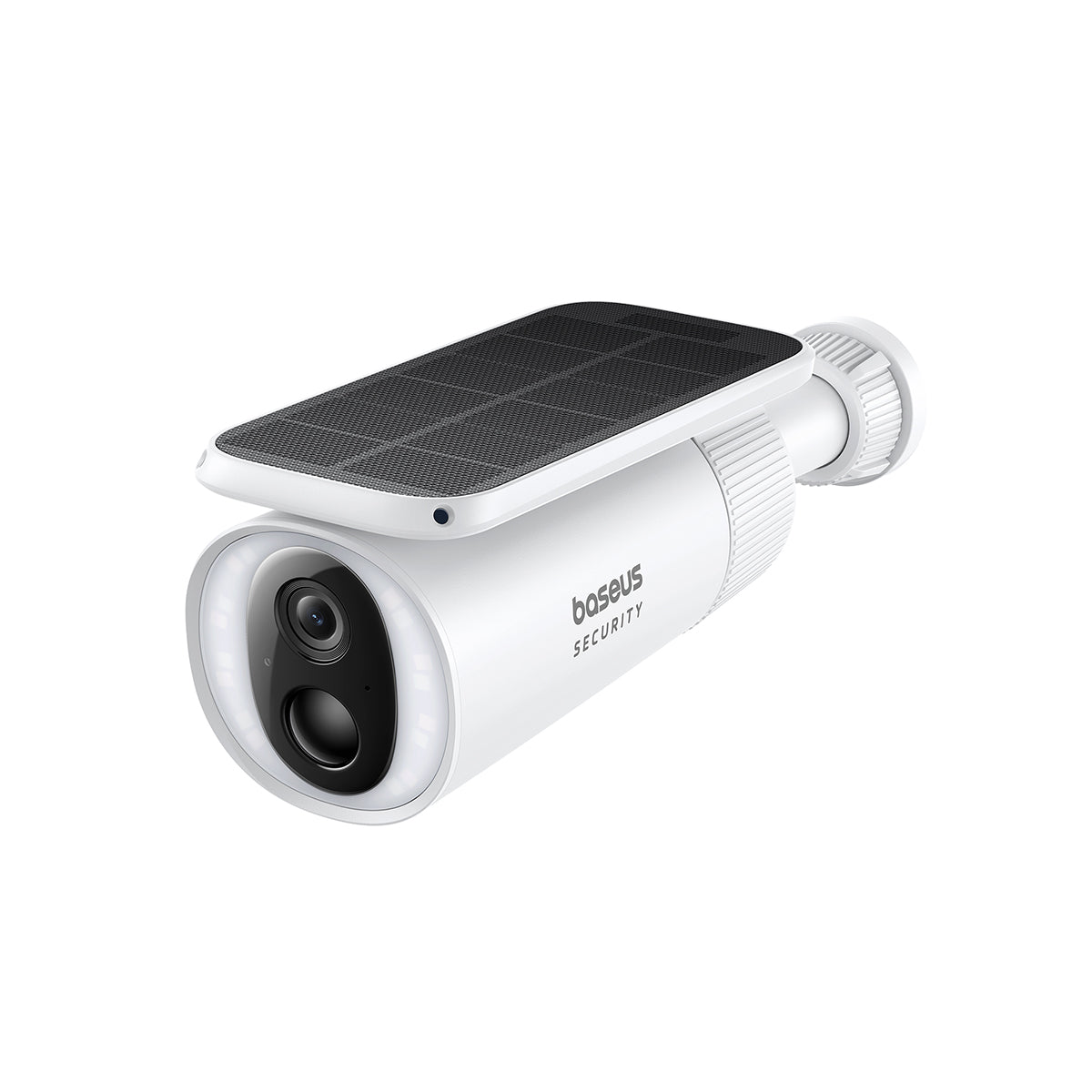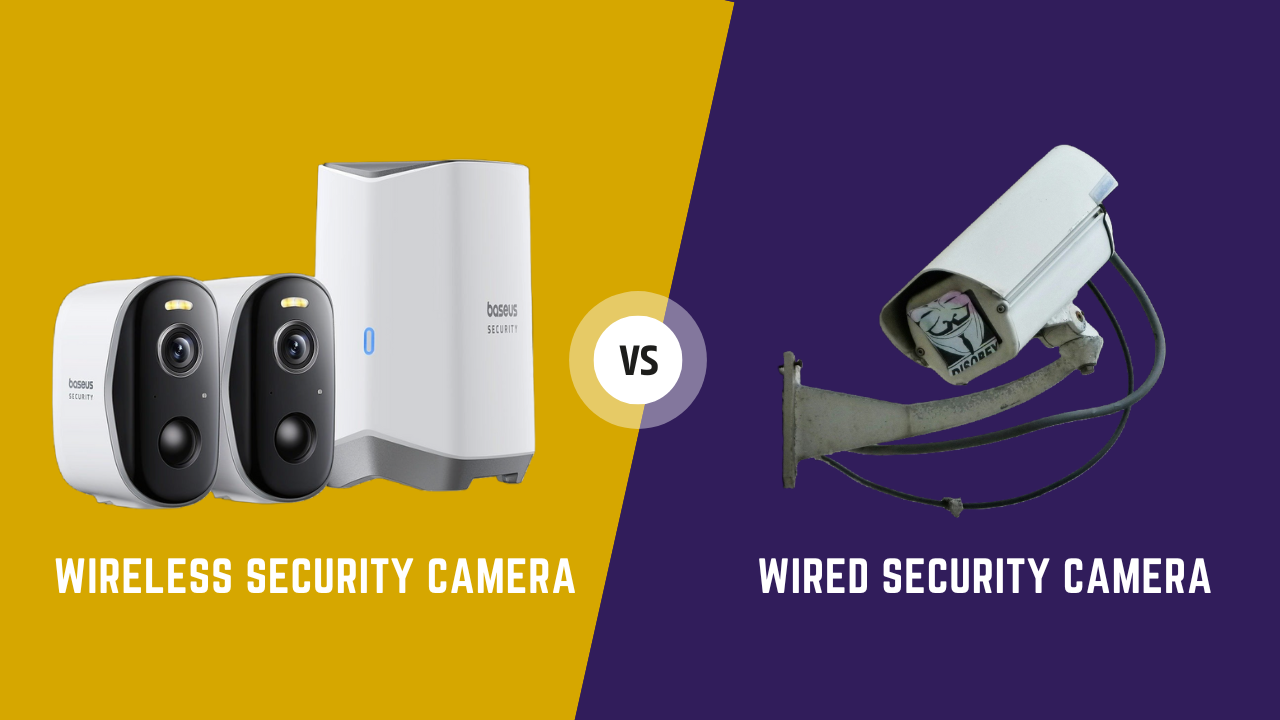The feeling of security in your own home is priceless. It's a fundamental human need. But in the modern world, achieving that peace of mind involves navigating a landscape of technology that can be, frankly, bewildering. When you decide to bolster your home's defenses, you’re immediately faced with a crucial, foundational choice that will dictate everything from installation to daily operation: the great debate of wired vs wireless security cameras.
This isn't just a simple preference. It's a decision with cascading consequences for reliability, flexibility, cost, and even the aesthetic of your home. One path offers steadfast stability, a digital fortress with physical connections. The other champions freedom and simplicity, a nimble guardian that can be placed almost anywhere. Which one is truly superior? The answer, frustratingly and honestly, is: it depends.
This comprehensive guide will demystify the conflict. We will dissect the technology, stack the pros and cons side-by-side, and explore the nuanced scenarios where one unequivocally outshines the other. By the end, you won't just have an answer; you will have the right answer for your specific needs, your property, and your peace of mind.
How Do Wireless Security Cameras Work?
The term "wireless" can be a bit of a misnomer, and understanding the nuance is key. A wireless security camera primarily refers to how it transmits data. Instead of a physical data cable, it uses your home's Wi-Fi network to send video and audio footage to a receiver.
Here’s the typical process:
-
Capture: The camera’s lens and sensor capture the video feed, just like any digital camera.
-
Processing: An internal processor compresses the video data.
-
Transmission: A built-in Wi-Fi transmitter connects to your home's wireless router, sending the compressed video data over the air.
-
Storage & Viewing: The footage is sent to a destination where you can view and store it. This is typically a cloud-based server maintained by the camera manufacturer, although some models offer local storage options like a microSD card. You then access this footage from anywhere in the world via a smartphone app or web portal.

But what about power? This is where it gets interesting. While the data is wireless, the camera still needs electricity. This leads to two main sub-categories:
-
Truly Wireless: These cameras are powered by rechargeable batteries or sometimes solar panels. They are the epitome of flexibility, requiring no cables whatsoever. You can mount them anywhere within Wi-Fi range.
-
Plug-in Wireless: These cameras are still a type of wireless security camera because they transmit data via Wi-Fi, but they must be plugged into a standard electrical outlet for continuous power.
For locations entirely off the grid—like a remote gate, a barn, or a vacation property without an internet connection—a specialized category emerges: wireless cellular security cameras. These advanced devices, often referred to as a 4g wireless security camera, have their own SIM card and use cellular data networks to transmit footage, offering incredible versatility where Wi-Fi can't reach. Initial setup for many modern cameras, even those on Wi-Fi, might utilize a short-range connection for simplicity, a feature sometimes found in a bluetooth wireless security camera to sync with your phone before connecting to the main network.
How Do Wired Security Cameras Work?
Wired security camera systems are the traditional, more robust solution. They are defined by their reliance on physical cables for both data transmission and, in most modern cases, power.
The workflow for a wired system looks like this:
-
Capture: The camera captures the video feed.
-
Transmission: The video data is sent through a physical cable directly to a central recording hub. There are two main types of cables used:
-
Siamese Coaxial Cables: Used in older analog CCTV systems. They have two cables bundled together—one for video (the BNC connector) and one for power.
-
Ethernet Cables (Cat5/Cat6): Used in modern IP (Internet Protocol) camera systems. This is the preferred method today.
-
Recording & Power (The Hub): The cables run to a central device. This is either a Digital Video Recorder (DVR) for analog cameras or a Network Video Recorder (NVR) for IP cameras. This hub is the brain of the operation. It records the footage onto large internal hard drives, processes it, and connects to your router via a single cable to allow for remote viewing.

A key technology in modern wired systems is Power over Ethernet (PoE). With PoE, a single Ethernet cable running to the camera provides both a highly stable data connection and a constant supply of electrical power from the NVR. This eliminates the need to have a separate power outlet near each camera, simplifying the wiring challenge significantly.
Wired vs. Wireless Security Cameras: A Head-to-Head Comparison
Now that we understand the underlying technology, let's pit them against each other across the factors that matter most to a homeowner.
Installation & Flexibility
This is the most straightforward comparison, and wireless wins by a landslide.
-
Wireless: Installation is a dream. You can mount a battery-powered wireless security camera on a wall, a tree, or a post in minutes. There's no drilling through walls for cables, no complex wiring diagrams. This makes them perfect for renters, temporary setups, or homeowners who prefer a DIY approach. Their placement is limited only by your Wi-Fi signal's reach.
-
Wired: Installation is a serious undertaking. It often requires professional installation, involving drilling holes through exterior and interior walls to run cables from each camera back to the NVR. This is more invasive, permanent, and far less flexible. Once a wired camera is installed, moving it is a major project.
Reliability & Signal Interference
Here, the tables turn dramatically. Reliability is the cornerstone of wired systems.
-
Wired: A physical cable is a closed, stable circuit. It is immune to the signal fluctuations that plague wireless devices. It doesn't care if your kids are streaming 4K movies or if your neighbor set up a new, powerful router. A wired connection is a fortress of dependability, providing a constant, uninterrupted feed. Barring a physical cut to the cable, the signal is flawless.
-
Wireless: Wireless cameras are at the mercy of your Wi-Fi network. The signal can be weakened by distance from the router, thick walls (especially concrete and brick), and interference from other electronic devices like microwaves, cordless phones, and neighboring Wi-Fi networks. This can lead to dropped frames, laggy video, or the camera disconnecting entirely right when you need it most. According to a consumer advisory from the Federal Trade Commission (FTC), securing your wireless network is paramount, as it is the gateway for these cameras.
Security & Hacking Risks
This is a point of huge concern for many users. Which system is safer from digital intruders?
-
Wired: By its very nature, a wired system is significantly more secure. Because the video feed travels through a closed physical circuit to an NVR stored inside your home, a hacker's only point of entry is the NVR itself. To access the camera feeds, they would need to breach your home's primary network firewall to get to the NVR, a much more difficult task than intercepting a wireless signal.
-
Wireless: A wireless security camera transmits data through the air. While this data is encrypted (look for WPA2 or WPA3 encryption), it still presents a larger "attack surface." A determined hacker could potentially exploit vulnerabilities in your Wi-Fi network, attempt to jam the signal, or hack the camera directly if it has a weak password or outdated firmware. Choosing a reputable brand that provides regular security updates is absolutely critical for any wireless camera.
Video Quality & Bandwidth
Historically, wired cameras held a clear advantage in video quality. That gap has narrowed significantly, but there's a crucial caveat.
-
Wired: Wired IP cameras can handle massive amounts of data without any strain. This means they can reliably record and transmit 4K or even higher resolution video 24/7 from multiple cameras without impacting your home's internet performance for other activities.
-
Wireless: Modern wireless cameras now also offer stunning 2K and 4K resolution. However, streaming that ultra-high-definition video puts a significant strain on your Wi-Fi network. If you have multiple high-res wireless cameras, you might notice slower internet speeds on your other devices. Some users have to upgrade their internet plan or Wi-Fi router to handle the load.
Cost - Upfront vs. Long-Term
The financial calculation is a tale of two budgets.
-
Wireless: The upfront cost is generally lower. You can buy a single, high-quality wireless security camera for a relatively low price and add more over time. However, the potential long-term costs can add up. Many wireless cameras are designed to work best with a paid monthly cloud storage subscription, which is a recurring fee.
-
Wired: The initial investment is much higher. A complete system with an NVR and multiple cameras can be expensive, and if you need professional installation, that cost can double. The silver lining? There are typically no mandatory monthly fees. All your storage is local on the NVR's hard drive, which you own outright.
Special Use Cases: Where Each Type Shines
The debate over wired vs wireless security cameras often resolves itself when you consider specific applications.
-
For the Renter or Apartment Dweller: The wireless security camera is the undisputed champion. No drilling, no permanent modifications, and you can take the entire system with you when you move.
-
For the Large Property Owner: For a large home with significant ground to cover, a wired PoE system offers the reliability needed to ensure that the camera at the far end of the property has the same rock-solid connection as the one by the front door.
-
For the Off-Grid Location: For a construction site, a remote farm gate, or a boat dock, Wi-Fi is a non-starter. This is the exclusive domain of wireless cellular security cameras. A 4g wireless security camera provides robust surveillance completely independent of a local internet network.
-
For Versatile Outdoor Coverage: Today's advanced outdoor cameras often blend the best features. A product like the Baseus N1 Outdoor Security Camera offers the easy installation of a wireless model but incorporates advanced features like high-definition video and robust weatherproofing, making it a powerful and flexible choice for monitoring driveways, backyards, and entryways.

The Hybrid Approach: Getting the Best of Both Worlds
For many homeowners, the ultimate solution isn't strictly one or the other. It's a hybrid system. This strategic approach uses each technology for its strengths.
You might install a robust wired PoE system to cover the most critical, high-traffic areas of your property—like the front door, back door, and garage—that absolutely must be recorded 24/7 without fail. Then, you can supplement this core system with flexible, battery-powered wireless cameras to monitor lower-risk or difficult-to-wire interior rooms, a detached shed, or a child's playroom. This gives you the ironclad reliability of wired where it counts and the convenient flexibility of wireless where it's most practical.
Conclusion: There is No Single "Superior" Camera, Only the Superior Choice for You
The showdown between wired vs wireless security cameras doesn't end with a single knockout punch. There is no universal winner. The "superior" system is the one that aligns perfectly with your life.
If you value ultimate convenience, flexibility, and ease of installation above all else, and you have a strong, stable Wi-Fi network, the wireless security camera is your clear choice. It’s modern, user-friendly, and highly effective for the vast majority of urban and suburban homes.
If, however, your priorities are absolute reliability, maximum security against hacking, and a stable, professional-grade system that you can set and forget without worrying about battery life or signal drops, then a wired PoE system is the undeniable gold standard. It’s an investment in unwavering performance.
Evaluate your property. Assess your budget. Be honest about your technical comfort level. The right guardian for your home is waiting.
Take the Next Step in Securing Your Home
Feeling more confident? The world of home security is at your fingertips. Explore our curated collection of top-performing security solutions that blend cutting-edge technology with user-friendly design.











